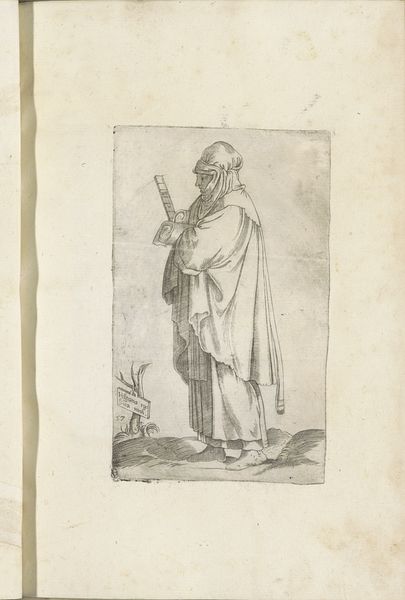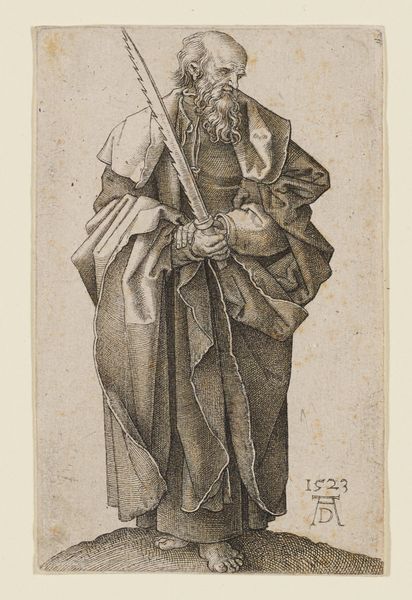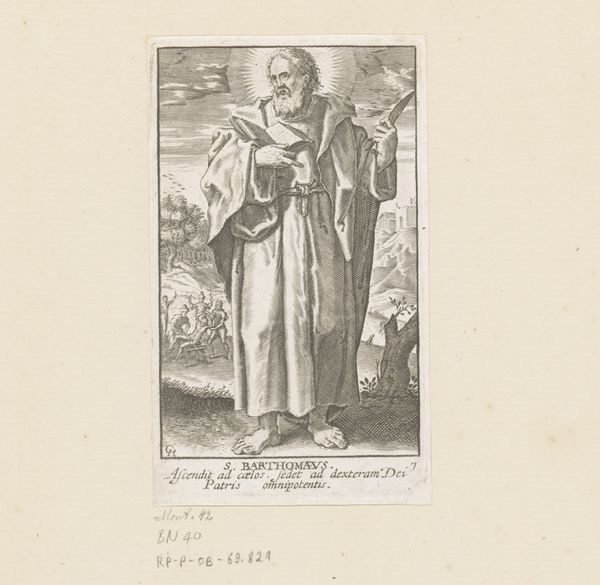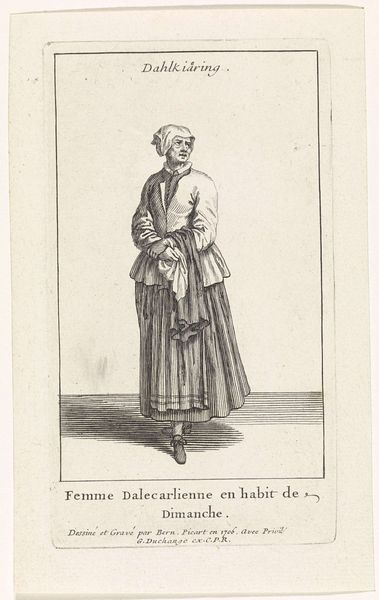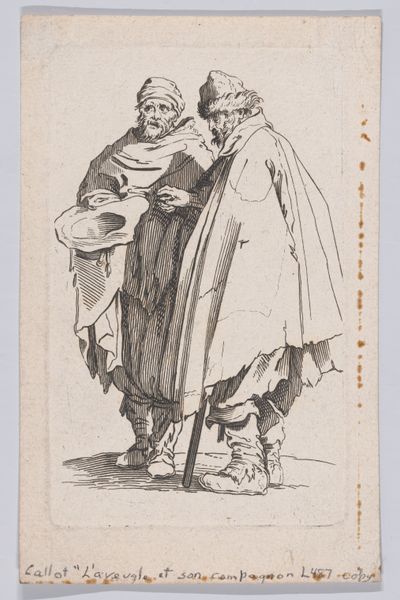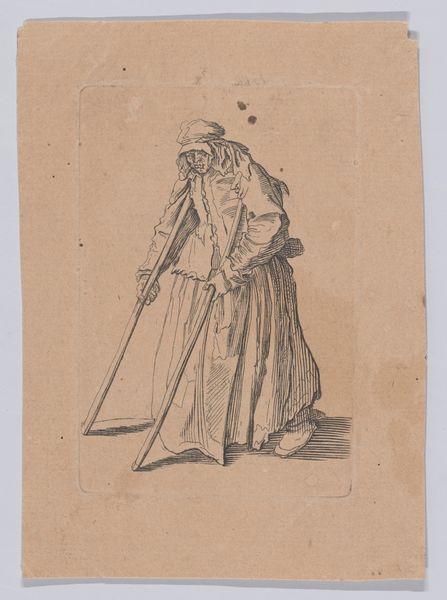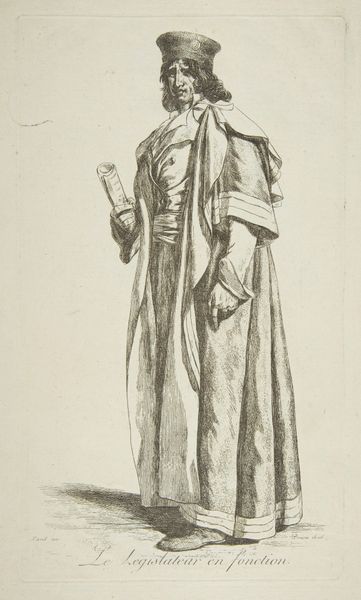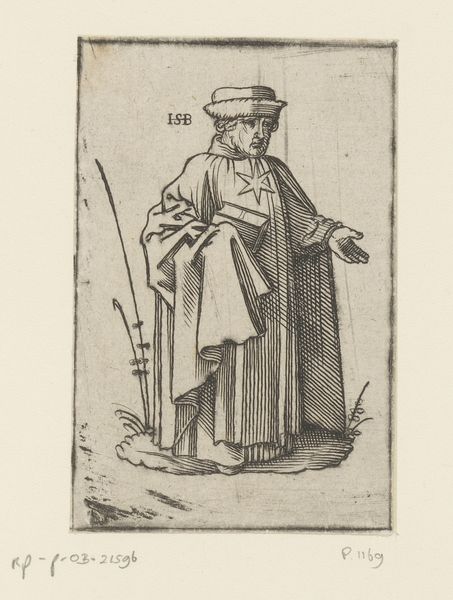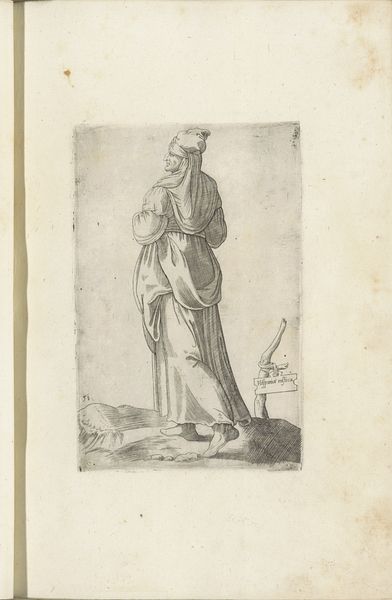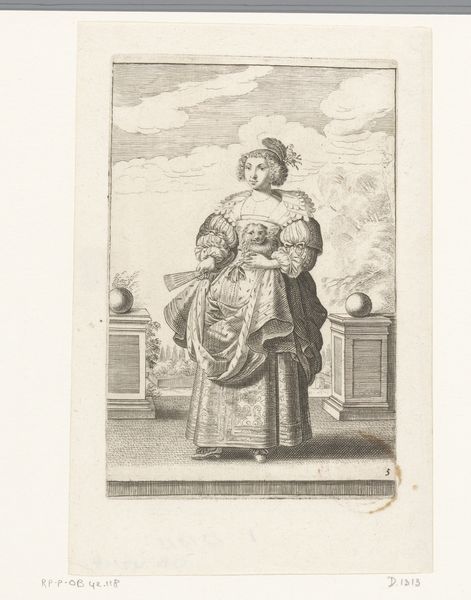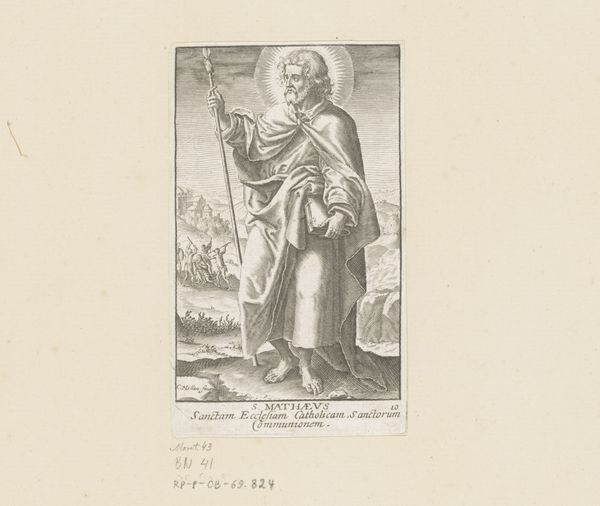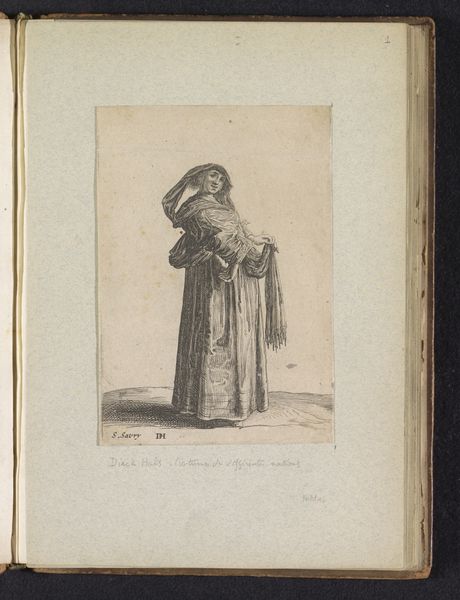
print, paper, engraving
#
portrait
#
baroque
#
ink paper printed
# print
#
paper
#
dress
#
engraving
Dimensions: height 135 mm, width 72 mm
Copyright: Rijks Museum: Open Domain
Curator: This is an engraving by Wenceslaus Hollar, dating back to 1658, titled "Engelse vrouw van stand met hoofddoek en mof," which translates to "English woman of rank with headscarf and muff." Editor: Immediately striking is the texture, the contrasting softness of the fur muff against the sheen of the fabric. It gives an interesting dimensionality to what would otherwise be a simple portrait. Curator: Precisely! Hollar, active in England, captures more than just an image; he offers insight into class and identity. Her attire signifies belonging, access to global trade routes for silks and furs, but also a complex visual language of self-presentation governed by rigid societal norms. The portrait embodies gender, and hierarchy through textiles and fashion. Editor: Note the exquisite use of line—see how the density varies, creating the illusion of light on the satin. The linear rhythms pull you in. Hollar's manipulation of value creates shape, depth, and texture, transforming simple strokes into a lavish fabric. Curator: And beyond pure aesthetics, the 'headscarf and muff' become performative symbols of both modesty and affluence within 17th century English society. Fashion's role then mirrors ours, creating social divides and reinforcing dominant ideologies. The lace, bow, the draping—these all communicate layers of social meaning, it also evokes colonial trade. Editor: Absolutely. Though small in scale, the meticulous hatching creates the grand impression, an interesting dance between miniature and monumentality. Curator: Indeed, it's not just about technique, but the artwork serves as a window to question female representation, power dynamics, and cultural exchange in early modern Europe. How did women of different classes engage with the dominant aesthetic, and resist its impositions? Editor: This deepens my reading significantly; seeing beyond surface embellishment enriches our appreciation, wouldn't you say? Curator: Undeniably. An investigation into fashion, class, gender and colonial legacy using close observation opens this work. It speaks beyond aesthetic pleasure. Editor: What began as visual delight deepens into cultural reflection, expanding perception using detailed rendering.
Comments
No comments
Be the first to comment and join the conversation on the ultimate creative platform.
